Ten years ago there was a revolution. A red one. The West Coast Main Line changed forever when the sleek Class 390 Pendolinos tilted their way onto the main line, replacing the popular but ageing and increasingly unreliable locomotive-hauled trains.
The ‘390s’ were the first trains built to tilt in the UK since the ill-fated Advanced Passenger Train (APT) in the 1980s. Although the IC225 sets had been constructed for 140mph running, and the coaches designed with high-speed running, they never tilted.
Alstom built the ‘390s’ for 140mph running. They were supposed to be able to use in-cab signalling to reach these speeds, but the West Coast Modernisation Plan was scaled back, and so now they only attain 125mph.
Nevertheless, the trains are worked hard, and 12 years since the first ‘390’ entered traffic, and ten years since the start of the full squadron service, the first Pendolinos are now passing the three million miles in traffic mark. As a comparison, Class 55 Deltics achieved two million miles in their 21-year career on the East Coast Main Line.
Virgin won the West Coast Main Line franchise on February 19 1997. At the launch, the company claimed that tilting trains would run on the WCML within four years - it missed its target by a year.
Later that year, on October 28, Railtrack announced a £2.1 billion upgrade of the WCML to enable high-speed services by 2005.
On November 17 1998, the Pendolino design was unveiled, and in 2000 the first bodyshell arrived in the UK. Initially 53 eight-car trains were ordered, but from 390035 onwards they were delivered as nine-car trains, with the first 34 extended to nine cars retrospectively. They were built at Savigliano in Italy, with the bodyshells then shipped to Alstom’s Washwood Heath facility for final fitting out.
Richard Branson launched the Pendolino at London Euston on April 30 2002, and called it “the best-looking train in the world”.
On July 23 2002, 390010 become the first to carry passengers in the UK when it worked the 1102 Birmingham International-Manchester Piccadilly, in conjunction with the Commonwealth Games that were being held in Manchester. The first ‘390’ arrived at London under its own power on November 7 2002, when 390011 glided into Euston.
Around a month earlier, on October 9 2002, the Strategic Rail Authority had unveiled a £9.8bn plan for a WCML upgrade. These trains were to transform the WCML.
In 2008, the fleet was expanded with a further four ordered (390054-390057). These were to be 11-car trains, and a deal was signed for 35 of the earlier trains to be extended from nine-car to 11-car formations.
The extra units, as well as the four new 11-car ‘390s’, were all built in Italy and shipped to the UK through the Channel Tunnel. They were integrated into the existing ‘390s’ as they underwent their H3 overhauls at Longsight (Manchester), which is where Alstom maintains the trains.
Each day 50 Class 390s are used on the WCML. Maintained by Alstom, they work from Wembley, Oxley, Longsight, Edge Hill and Polmadie. Additionally, a set can stable at Preston.
There is the possibility, when the North West Electrification Programme is complete, that the Preston ‘390’ may run to Edge Hill. It cannot go to Longsight, as the Manchester depot is at full capacity. At weekends some are also stabled at London Euston.
Each train will travel at least 1,000 miles per day. Fifty are in traffic, so that equates to 50,000 miles per day for the entire fleet, 350,000 miles per week and 18,150,000 miles per year. The longest daily diagram is 1,3831/2 miles (see pages 60-69).
An additional 51st Pendolino is to be used by Virgin Trains on a Friday evening. This will replace a Mk 3 locomotive-hauled train (nicknamed the ‘Pretendolino’ because it is in the same livery externally and internally) that has been leased as cover for the ‘390s’, but which will be sent off-lease on November 9.
“The standby set will come into use,” VT Fleet Delivery Manager Andy Grundy tells RAIL. “It will come off Longsight at around 1600, and that means we can still do more work on it if needed. The set is booked off an exam at 1409.”
Grundy says that the set doesn’t normally come into use, as usually there is a spare at Oxley. This ‘spare’ will most likely be based at Wembley in the future, as that is where it makes most sense operationally.
RAIL visits Wembley depot in the early hours of September 4, as the ‘390s’ are busily being prepared for work. One set (390104 Alstom Pendolino) is in the main shed. It will later work the longest diagram, although Grundy and Alstom Operations Project Manager, Mainline, Derek Swanson both explain that there is no extra work needed for it. “If we prepare for a certain diagram, that means we cannot swap sets if we need to.”
Grundy looks at the ‘390s’ that have arrived. A board in the ‘Control Room’ lists what ‘390s’ are on site, and the work that they require. 390104 arrived at 0045 and is due off at 0422. That is the shortest downtime for any of the units. It had arrived early.
All ‘390s’ have their water replenished at Wembley, and Control Emission Toilets (CETs) emptied at most every two days. Each night across the depots 38 trains are worked on. Because of the intensity of the diagrams, if they go any longer, the CETs may get full, and so a ‘390’ loses its toilet facility.
Each night 12 Class 390s usually return to Wembley. Of the 12 on September 4, one (390155 X-Men Days of Future Past) was planned to run to Oxley the following night because of a number of faults. This meant that VT had lost a ‘390’, although it was still able to cope by using the spare set. At Wembley that night were 390009/011/042-044, 390104/112/121/135/155/157.
Swanson tells RAIL that Alstom’s ability to maintain the trains really does depend on the day. Because of the nature of the Very High Frequency (VHF) diagram that was introduced in 2008, the trains are intensively used, and it doesn’t take much of a delay to knock them out of sync.
“We are susceptible to Network Rail,” he acknowledges. “Virgin knows what maintenance capacity we have, and what we need to do.”
Grundy nods his head: “Alstom supplies 50 sets. There is one spare at Oxley. We have six on maintenance. Of those, one is undergoing an E/F or G exam, which is every 200,000 miles and takes three days. One is undergoing a D exam, which is every 100,000 miles and takes two days. Then there is also one undergoing a heavy repair at Longsight.”
There are also two sets (usually) that are ‘reliabilty sets’. These are normally ones that have experienced small problems, and Alstom engineers check everything. One of these trains is at Edge Hill, and the other at Oxley.
Grundy says that the next round of overhauls (H4) will begin next year. These will mimic the H1 overhauls, and for 390155-390157 it will be their first overhauls - 390154 has already been treated because it was already in use when its three new classmates were delivered.
There are also other exams (B and C) that are carried out every 20,000 miles, which equates to every 20 days. Grundy admits that the diagrams need balancing - for example, there cannot be ten ‘390s’ needing exams at the same time.
Grundy explains what happens when there are problems with the WCML: “Our best opportunity to get back on track is to step up at Euston , but that is not ideal as there is a tighter turnaround.”
Performance-wise, he says the ‘390s’ are recording an MTIN (miles per technical incident number) of 16,000-17,000 miles.
Swanson points out that, interestingly, all fleet performance dipped during the summer.
“There’s a variety of reasons, but not one major one,” he says. “The hot weather had an impact, but not massive. We can trace it to issues on the main line, as the delays to the depot don’t help.”
Grundy says that the Watford weekend closures are beneficial because it allows some ‘390s’ to be stood down for additional maintenance. He believes that should boost performance.
Swanson explains: “We need to know what is happening. Network Rail is coming on board now. It feels like there is ‘something’ there now that wasn’t before.”
Both suggest that NR is now more receptive to the operator’s concerns. “From a ‘390’ point of view we can plan, but we are at the mercy of the railway.”
Each depot that the ‘390s’ visit has a different role. For example, Oxley has a lot of staff who built the trains at Washwood Heath. Wembley is able to carry out air-conditioning unit overhauls. Longsight is the ‘mothership’ for the ‘390s’, and so gets the biggest repairs.
Swanson explains: “Every single day we review what has happened in the past 24 hours regarding fleet performance, and we talk about what we can do. It is a cycle. The exams come first. It is quite a challenge. It would be dead easy to say we want lots of time. But you just cannot do that.”
Could more be extracted from the ‘390s’, in terms of performance? Could they do even more work?
“I think we could get more from the ‘390s’,” says Grundy. “They could run for 24 hours a day. But what effect would that have on reliability? I think we are at the point where they can do as much as they can.
“The longer they run during the day, the less maintenance time there is. Take today. 390005 has failed with a Train Management System fault. That means we need to step up, but that affects capacity.
“You are balancing and looking at the long-term view. Sometimes we have to make the decision to cancel because it gives us breathing space. Ideally we’d look to knock out a London to Birmingham or Manchester, but you need to look at the train crew, or the set, to see where they need to be.”
The Pendolinos are, indeed, intensively worked. There is little scope for things to go wrong, and by 2025 the WCML will be at full capacity. The Pendolinos are keeping the UK’s premier main line running at full tilt, and their future is secure.
- This feature was originally published in RAIL 758 on 1 October 2014

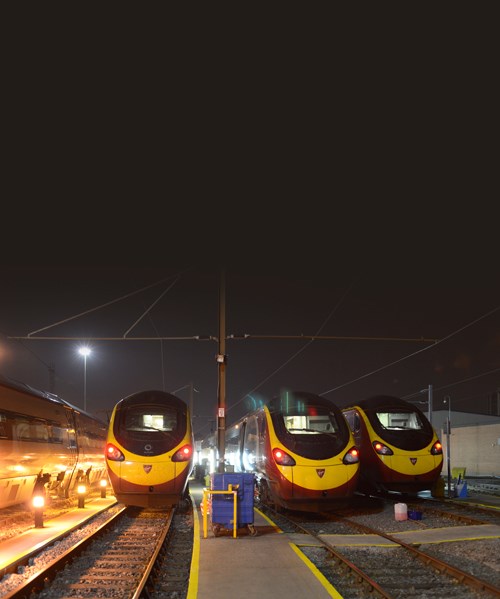
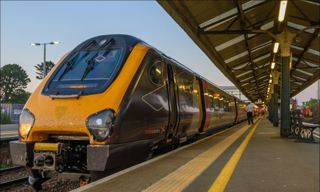
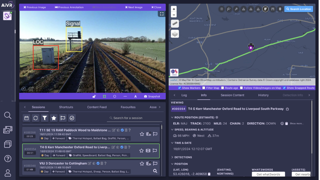
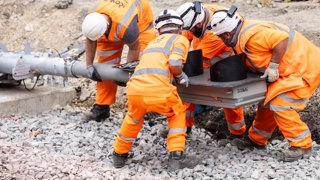
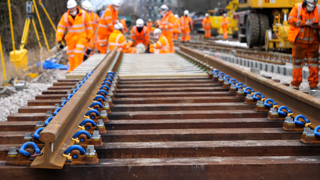










George - 02/04/2015 22:31
A great train! Have to say though, the interiors are starting to look a little tired (in my opinion of course) and I've never been a fan of the plastic trim. Many of the seat backs are covered in pen marks and scratches and could do with being replaced or cleaned. Obviously not necessarily Virgin's fault.